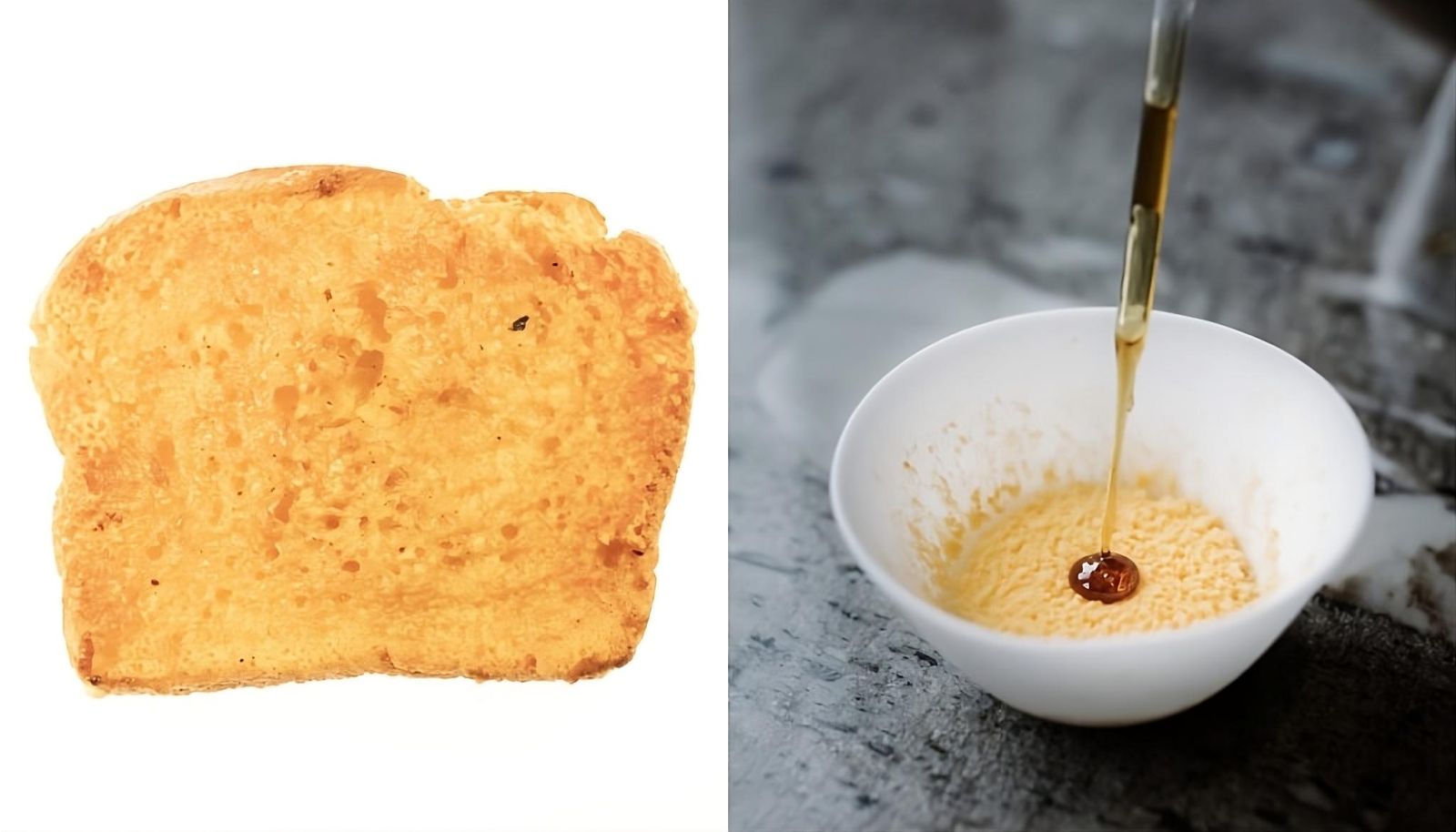This mold transforms waste into gastronomic delights
Published by Cédric,
Article author: Cédric DEPOND
Source: Nature Microbiology
Other Languages: FR, DE, ES, PT
Article author: Cédric DEPOND
Source: Nature Microbiology
Other Languages: FR, DE, ES, PT
Follow us on Google News (click on ☆)
Neurospora intermedia, an orange fungus, transforms waste products into refined dishes. Used for centuries in Indonesia to create oncom, this fungus is now at the forefront of sustainable cuisine in the West.

Neurospora intermedia, an orange mold, transforms stale bread into a cheesy treat when grilled (left).
The mold transforms unsweetened rice cream into a sweet dessert served at Alchemist restaurant in Copenhagen (right).
At the University of California, Berkeley, microbiologist and chef Vayu Hill-Maini has collaborated with renowned chefs to explore the possibilities this fungus offers. The results of these experiments are now found in famous restaurants, offering unexpected dishes such as cheesy-flavored stale bread or a sweet rice-based dessert.
Combating food waste is essential: one-third of the food produced globally is discarded, contributing to 8% of greenhouse gas emissions. Vayu Hill-Maini emphasizes that turning food waste into edible products can reduce the climate impact of food production and improve food security.
His team has found that Neurospora intermedia can grow on more than 30 types of agricultural waste without producing toxins. This fungus breaks down the cellulose in soybean and peanut waste to produce flavorful foods in just 36 hours.
The fermentation process by Neurospora intermedia transforms indigestible materials into nutritious food. This ability to enhance the nutritional and taste profile of products is a major advantage for sustainable cuisine.
Experiments conducted with chef Rasmus Munk in Copenhagen have led to the creation of innovative desserts. For example, a dessert made from rice cream fermented with Neurospora reveals surprising banana flavors.
Genetic studies have shown that two forms of Neurospora exist: wild strains and those adapted to agricultural waste. Domesticated strains, more efficient at degrading cellulose, pave the way for transforming waste into tasty foods.
The Neurospora intermedia fungus is thus much more than a simple element of traditional fermentation; it represents an opportunity to reduce food waste while creating new gastronomic products. The future of sustainable cuisine could very well be shaped by this modest fungus.